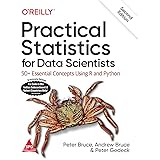Convert Numbers into Percentages in R with examples
Convert Numbers into Percentages in R, The percent() function from the scales package is the simplest way to format values as percentages in R. The syntax for this function is as follows.
Convert Numbers into Percentages in R
percent(x, accuracy = 1)
where:
x: The object to format as a percentage. accuracy: A figure to round up to. Use.01 to round to two decimal places, for example.
This tutorial shows you how to use this function in practice with various examples.
Example 1: Format Percentages in a Vector
The following code demonstrates how to format numbers in a vector as percentages.
Wilcoxon Signed Rank Test in R » an Overview » finnstats
library(scales)
Let create some data
data <- c(.25, .35, .1, .14, .72, .98)
data [1] 0.25 0.35 0.10 0.14 0.72 0.98
Now we can format numbers as percentages
percent(data, accuracy = 1) [1] "25%" "35%" "10%" "14%" "72%" "98%"
Numbers should be formatted as percentages with one decimal place.
percent(data, accuracy = 0.1) [1] "25.0%" "35.0%" "10.0%" "14.0%" "72.0%" "98.0%"
Numbers should be formatted as percentages with two decimal places.
percent(data, accuracy = 0.01) [1] "25.00%" "35.00%" "10.00%" "14.00%" "72.00%" "98.00%"
Example 2: Format Percentages in a Data Frame Column
The following code demonstrates how to format numbers as percentages in a data frame column.
Normality Test in R » How to Perform » Easy Steps » finnstats
library(scales)
Let’s create a data frame
df1 <- data.frame(Name=c('Q1', 'Q2', 'Q3'),
Score=c(44, 66, 77))View the data frame
df1
Name Score 1 Q1 0.44 2 Q2 0.66 3 Q3 0.77
In the growth column, format the values as percentages.
df1$Score <- percent(df1$Score, accuracy=1)
View updated data frame
df1
Name Score 1 Q1 44% 2 Q2 66% 3 Q3 77%
Example 3: Format Percentages in Multiple Data Frame Columns
The following code demonstrates how to format numbers in many columns of a data frame into percentages.
Equality of Variances in R-Homogeneity test-Quick Guide » finnstats
library(scales)
create a data frame
df<- data.frame(Name = c('A', 'B', 'C', 'D'),
value = c(.28, .3, .4, .58),
score = c(.56, .45, .77, .35))Now we can view the data frame
df
Name value score 1 A 0.28 0.56 2 B 0.30 0.45 3 C 0.40 0.77 4 D 0.58 0.35
In the growth and trend columns, format numbers as percentages.
How to Calculate Mean Absolute Percentage Error (MAPE) in R » finnstats
df[2:3] <- sapply(df[2:3], function(x) percent(x, accuracy=1)) df
Name value score 1 A 28% 56% 2 B 30% 45% 3 C 40% 77% 4 D 58% 35%
Have you found this article to be interesting? I'd be glad if you could forward it to a friend or share it on Twitter or Linked In to help it spread.






Please sir I need help on how to find full book of R charts codes everything on how to creat and controls charts
Now retrieving an image set.
Practical Statistics for Data Scientists: 50+ Essential Concepts Using R and Python, Second Edition (Greyscale Indian Edition)
₹1,475.00 (as of June 25 22:51 GMT +07:00 - More infoProduct prices and availability are accurate as of the date/time indicated and are subject to change. Any price and availability information displayed on [relevant Amazon Site(s), as applicable] at the time of purchase will apply to the purchase of this product.)